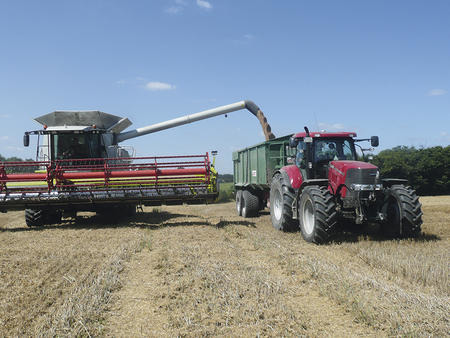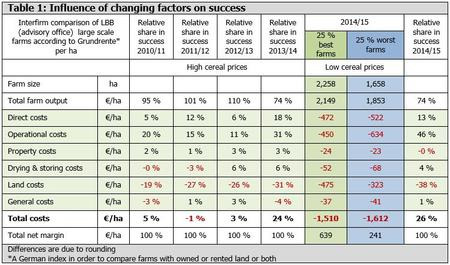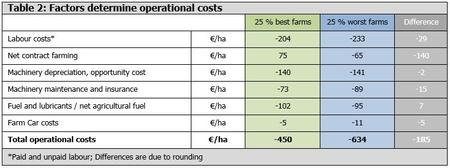International
Challenges of the low cereal prices – optimising success factors
Since 2013 wheat prices have fallen from 220 €/t to 150 €/t. High land rental prices, which have been agreed to in the hope of cereal prices remaining high, are posing an additional burden for the farms. Every farm manger should also ask himself: ”How can I react on this situation? Which further optimisation is still possible?”
Since 2013 the wheat prices have been falling from 220€/t to 150€/t. High land rental prices are also posing an additional burden for the farms. In respect of this difficult situation it is especially important to consider which further optimisation is still possible. As in the case of low prices and high fixed costs it is time to remember the principles of cost leadership.
Lennart Pötting and Cort Brinkmann (LBB – agricultural advisory service) derive from the operating results of their clients following conclusions:
- Most farms cannot optimise their direct costs (plant protection, seed, fertiliser) any further. Further significant reductions of for example fertiliser and plant protection input were even CONTRA productive due to a concurrent yield decrease.
- The authors still see further potential in optimising the operational costs. Often especially the labour efficiency can still be improved. Labour costs can be effectively reduced if the work time is targeted with little idling. This is only possible with a very good farm management, a certain amount of flexibility, well-educated employees and a good staff leadership.
- Another adjustment possibility improved machinery management including sufficient workload and suitable machine. It is not economical to invest into machines which cannot achieve an optimal workload. For many farms contract work - meaning external machinery use – can be an economical alternative.






